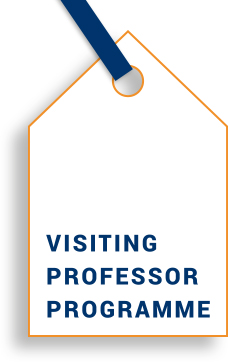Prof. Richard Spontak will give a seminar on the 25th of Ocotber at 4p.m.
On the 25th of October 2018 at 4p.m. at CNBCh UW in the Auditorium B, prof. Richard Spontak will deliver a seminar titled:
“Photodynamic : Polymers as Comprehensive Self-Sterilizing Materials: Staying Ahead of a Growing Global Threat”.
You are kindly welcome!
Abstract:
Adherence of pathogens such as bacteria and viruses on various surfaces routinely leads to subsequent transmission to new hosts, significantly promoting the proliferation of potentially harmful organisms. This sequence is particularly worrisome in the case of antibiotic-resistant pathogens, which are becoming a global threat to human health. According to the Centers for Disease Control and Prevention, 1 out of every 20 hospital patients is affected by nosocomial infections, subsequently resulting in 100,000 deaths annually in the United States alone. Out of these, about 23,000 deaths are attributed to drug-resistant pathogens such as methicillin-resistant Staphylococcus aureus (S. aureus) or vancomycin-resistant Enterococcus faecium (E. faecium). Such strains, commonly referred to as „nightmare bacteria” with highly elevated resistance to last-resort antibiotics, have been reported all around the world in 2017. While silver, copper, zinc oxide or titanium dioxide have been used as surfaces or introduced as nanoparticles into a broad range of substrates to serve as antimicrobial agents and eradicate a wide range of pathogens, they all suffer from eventual reservoir depletion, and they tend to be pathogen- or condition-specific. Moreover, if not covalently bound or tightly embedded, these nanoparticles can leach into the environment and introduce additional health concerns. In this study, we discuss a photodynamic polymer composed of an olefinic thermoplastic elastomer modified with zinc tetra(4-N-methylpyridyl)porphine (ZnTMPyP4+), a photoactive antimicrobial, and demonstrate that this combination is remarkably effective at inactivating 5 bacterial strains, including S. aureus and Escheria coli (E. coli) often associated with food poisoning, and 3 different viruses, including Human adenovirus-5 and influenza type A, upon exposure to non-coherent light at an intensity of 65-80 mW/cm2 for 60 min. By achieving antibacterial and antiviral efficacies of at least 99.89% and 99.95%, respectively, this methodology based on the light-induced creation of singlet oxygen constitutes a non-specific and highly efficient route by which to eliminate harmful pathogens via simple exposure to visible light and oxygen.
http://vpp.cnbch.uw.edu.pl/visitor/professor-richard-spontak/


